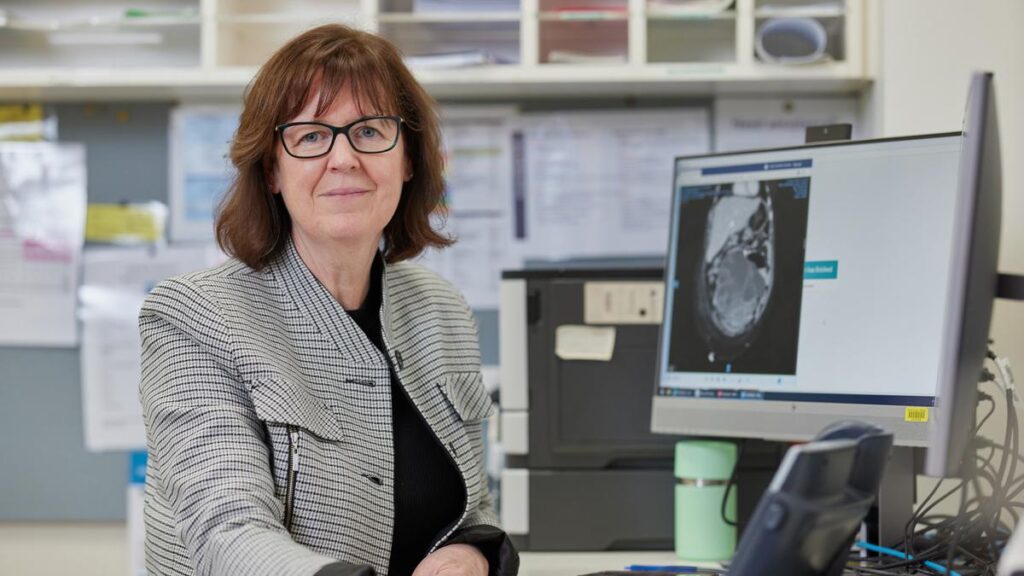
Associate Professor Orla McNally, Director of Gynaecological Oncology at the Royal Women’s Hospital in Melbourne.
A simple procedure during routine abdominal surgeries could prevent thousands of Australian women from developing ovarian cancer. New research indicates that approximately 65% of ovarian cancers originate in the fallopian tubes before spreading to the ovaries. The removal of fallopian tubes, a process known as opportunistic salpingectomy, could significantly lower the risk of this aggressive cancer.
There is now a concerted push for Australian women to be routinely offered this procedure during unrelated abdominal surgeries. Associate Professor Orla McNally of the Royal Women’s Hospital in Melbourne is at the forefront of efforts to make this preventative measure a standard practice across Australia.
The Science Behind the Procedure
According to Associate Professor McNally, published research has established that a significant portion of ovarian cancers likely begin in the fallopian tubes. “The type of cancer that is usually aggressive and often diagnosed at a later stage probably starts in the fallopian tubes,” she explained. This insight is driving the push for opportunistic salpingectomy, especially during surgeries such as hernia repairs or gallbladder operations.
A U.S. study published in August 2025 highlighted that one-quarter of 1,877 women who developed high-grade serous carcinoma (HGSC) had missed the chance to have their fallopian tubes removed during previous surgeries. Dr. Amy Wilson, a senior research advisor at the Ovarian Cancer Research Foundation, emphasized the importance of this procedure as “the most effective prevention strategy we have at the moment.”
“The decrease in risk really varies per study, but it’s up to 70%, which is incredible,” Dr. Wilson noted.
Challenges in Implementation
Despite its potential, several barriers prevent the widespread adoption of opportunistic salpingectomy in Australia. Dr. Wilson pointed out the lack of capacity and training among non-gynaecological surgeons, coupled with a general lack of awareness among healthcare professionals and the public. “You need to train surgeons to take out the fallopian tubes safely while preserving the ovaries,” she stated, urging women to discuss this possibility with their doctors.
Associate Professor McNally added that the procedure would only extend an existing operation by about 15 minutes and is considered low-risk when performed by skilled surgeons. This preventive measure is already offered in countries like Canada, Germany, Austria, and Sweden to women not planning to have more children.
Canadian modeling suggests that routine offering of this procedure could prevent one in five ovarian cancer cases.
Economic and Health Implications
The financial burden of ovarian cancer in Australia is significant, with costs reaching approximately $66,000 annually per patient. The total economic impact, including lost productivity and premature death, exceeds $3 billion each year. Dr. Wilson highlighted that reducing even a fifth of ovarian cancer cases could represent a substantial economic benefit.
Currently, around 1,815 Australians are diagnosed with ovarian cancer annually, with about 1,000 women succumbing to the disease each year. The absence of an early detection test and the often vague symptoms result in 70% of cases being diagnosed at advanced stages. The average five-year survival rate for ovarian cancer stands at 49%, starkly lower than that for breast and cervical cancers.
Next Steps and Recommendations
The Royal Australian and New Zealand College of Obstetricians and Gynaecologists already recommends fallopian tube removal during hysterectomies or sterilization procedures for women at average risk of ovarian cancer. Associate Professor McNally suggests extending this recommendation to other abdominal surgeries to further mitigate cancer risks.
“It’s very much for women who have completed their family, maybe from the age of 45. We need to be clear that it’s an irreversible step regarding having more children,” she clarified, noting that the procedure does not induce menopause as the ovaries are preserved.
Bridget Bradhurst, acting chief of support and advocacy at Ovarian Cancer Australia, emphasized the importance of exploring risk-reduction strategies given the lack of early detection tests. “It is great to know that more people are exploring this option with their surgical team,” she said, expressing hope for continued collaboration with the clinical community to implement these recommendations.
The most commonly reported symptoms of ovarian cancer include increased abdominal size or persistent bloating, abdominal or pelvic pain, feeling full quickly, and frequent or urgent urination. A WA Health spokeswoman noted that there is currently no systemwide policy for opportunistic salpingectomy, with the procedure only offered when clinically necessary.







